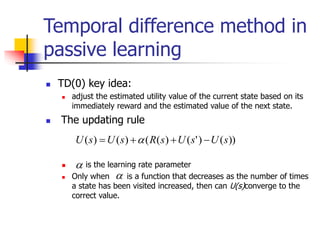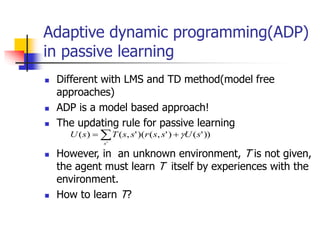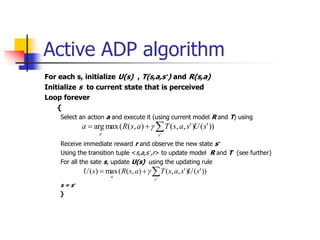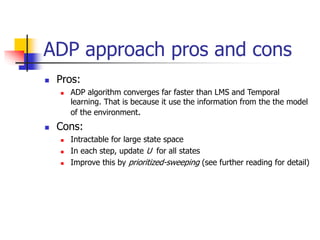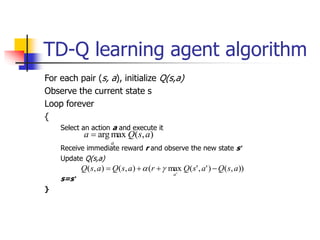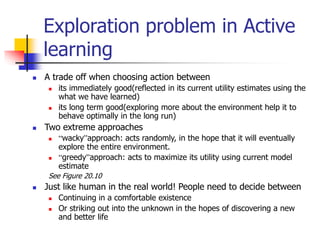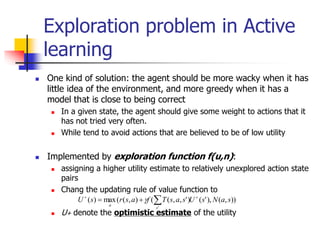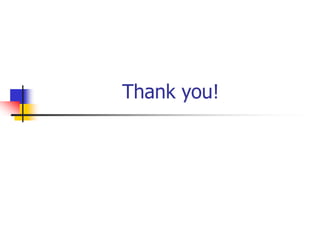Reinforcement learning involves an agent learning how to behave through trial-and-error interactions with an environment. The agent receives rewards or punishments that influence the agent's actions without being explicitly told which actions to take. There are two main approaches: model-based learns a model of the environment and uses it to derive an optimal policy, while model-free derives a policy without learning the environment model. Exploration vs exploitation tradeoff involves balancing gaining rewards with exploring to improve long-term learning. Methods like Q-learning and genetic algorithms are used to generalize to large state/action spaces.
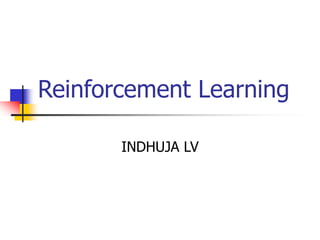



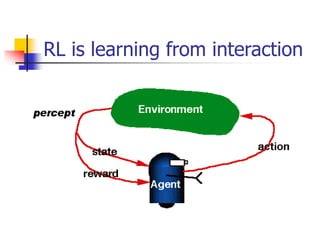
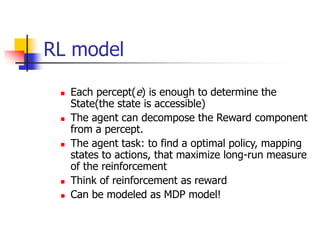
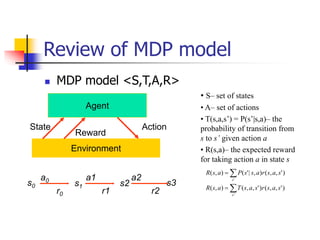



![Passive learning scenario
The agent see the the sequences of state
transitions and associate rewards
The environment generates state transitions and the
agent perceive them
e.g (1,1) (1,2) (1,3) (2,3) (3,3) (4,3)[+1]
(1,1)(1,2) (1,3) (1,2) (1,3) (1,2) (1,1) (2,1)
(3,1) (4,1) (4,2)[-1]
Key idea: updating the utility value using the
given training sequences.](https://image.slidesharecdn.com/indhu-230401080459-6cd8f9f0/85/Reinforcement-Learning-ppt-11-320.jpg)

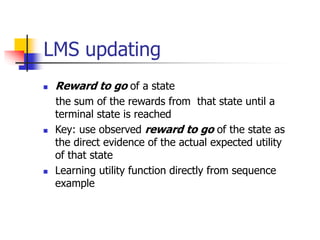
![LMS updating
function LMS-UPDATE (U, e, percepts, M, N ) return an updated U
if TERMINAL?[e] then
{ reward-to-go 0
for each ei in percepts (starting from end) do
s = STATE[ei]
reward-to-go reward-to-go + REWARS[ei]
U[s] = RUNNING-AVERAGE (U[s], reward-to-go, N[s])
end
}
function RUNNING-AVERAGE (U[s], reward-to-go, N[s] )
U[s] = [ U[s] * (N[s] – 1) + reward-to-go ] / N[s]](https://image.slidesharecdn.com/indhu-230401080459-6cd8f9f0/85/Reinforcement-Learning-ppt-14-320.jpg)

